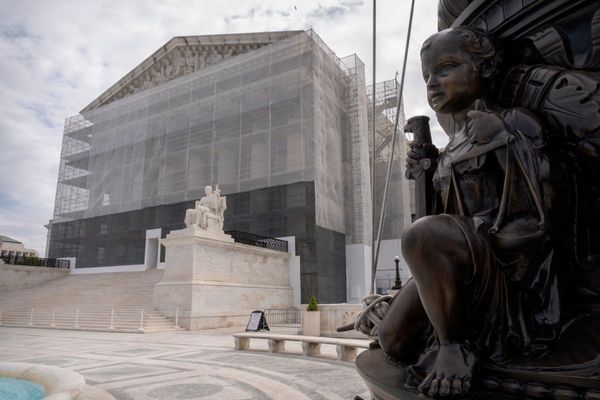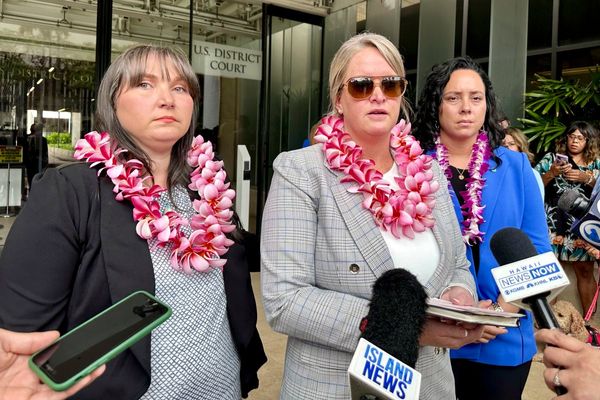
Mike Pezzullo doesn’t like leakers. When then-News Corp journalist Annika Smethurst embarrassed the Home Affairs head by revealing a letter that exposed his plot to unleash Australia’s defence signals intelligence arm on ordinary Australians, he reacted with rage.
“Subject to judicial process and fair process, they should go to jail for that,” he said about the source of the leak.
The apparent motivations of the leaker also especially incensed Pezzullo: “It was designed to play into a Canberra game about which agency is asking other agencies to expand its powers and remits. It’s completely unacceptable for public servants to be playing in that way.”
Pezzullo would go on to push for the reimposition of gag laws on journalists — a group he has referred to in the past as “bottom feeders”. Smethurst would go on to be raided by goons from the Australian Federal Police, an organisation then in Pezzullo’s portfolio.
What to make, then, of yet another extraordinary and humiliating revelation about Pezzullo, that he shared a confidential assessment prepared after the Christchurch massacre with not even a journalist but interlocutor and Liberal Party figure Scott Briggs?
“Just for you. Sent to PM and MHA a few minutes ago. Do not pass on,” Nine newspapers’ Nick McKenzie and Michael Bachelard report, in the latest instalment of their remarkable scoop on Pezzullo’s texts.
Presumably that document wasn’t “top secret”. But it was prepared by the head of the government’s domestic security department for the prime minister and Home Affairs minister, and was of sufficient sensitivity that Pezzullo felt obliged to request that Briggs keep it to himself.
What was the purpose of Pezzullo sharing the document? Not to influence public opinion, which would have been the case if Pezzullo had leaked it to a journalist. Nor to influence those in power — after all, the PM and a senior minister had received it just “a few minutes ago”. The only possible reason Pezzullo sent it was to impress a powerful Liberal Party figure, a close friend of the prime minister and government insider, one who could be a powerful ally for Pezzullo in pursuing his own agenda within government, and against other secretaries and portfolios with different priorities to his.
Or, perhaps, to put it another way, “it was designed to play into a Canberra game about which agency is asking other agencies to expand its powers and remits”. And as we know from Pezzullo, this is completely unacceptable for public servants.
Except, that’s untrue. In fact, it’s completely acceptable for national security bureaucrats and politicians to play inter- and intra-agency games with national security documents — or, at least, they do it all the time. Information deemed to be confidential or secret is often used by both politicians and senior bureaucrats to curry favour with (or “turn”, to use another Pezzullo phrase) journalists, in order to deliver a self-serving narrative, to push a favoured government line, to discredit critics or opponents.
The same people, however, are outraged if a leak embarrasses them or the government they serve, or the agency they work in, and the AFP are immediately dispatched to track down the source. But when confidential information makes its way into the media that serves the interest of the government or a minister, no politician or senior national security bureaucrat ever gets raided or investigated by the AFP.
The irony of Pezzullo sharing his confidential assessment of the perpetrator of the Christchurch massacre is that, two days before the mosque shootings in 2019, Pezzullo rose at the Australian Strategic Policy Institute to deliver a speech he titled “Seven Gathering Storms — National Security in the 2020s”.
What were those “storms”? The possibility of a great power war; the use of chemical, biological, radiological or nuclear weapons; a large-scale cyber attack; “deliberate subversion of our democratic institutions and our social cohesion”; terrorist threats from “ungoverned and dangerous territories”; “radical extremist Islamist terrorism”, and multinational organised crime.
Pezzullo was insistent that this wasn’t just a scary list, but “an evidence-based risk framework for thinking about national security in the 2020s”.
Except, of course, he completely missed the most imminent threat of all: far-right terrorism. While Pezzullo was hyping the threat of Islamist terrorism, he seemed to think violent white supremacists carrying out mass casualty attacks on Muslims wasn’t worthy of his “evidence-based risk framework”.
That’s despite years of warnings in the US that far-right groups like “sovereign citizens” are the biggest threat to American police; and the surge in far-right terrorism in the US in the years before Christchurch. And it was despite ASIO — which had been moved into Pezzullo’s portfolio when Home Affairs was created — finding increasingly violent rhetoric from right-wing extremists in Australia, and then-ASIO head Duncan Lewis warning in October 2016 that ASIO was working on violent right-wing extremism.
One wonders whether, while big-noting himself to Briggs with his post-Christchurch assessment, Pezzullo acknowledged how wrong he’d been.







